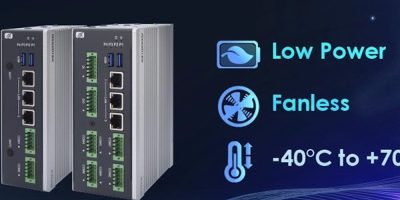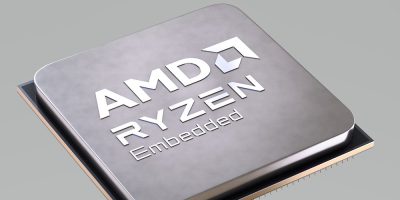Designed with scalability in mind, Axiomtek included storage, wireless module expansions and I/O interfaces in its ICO330 embedded system. The DIN-rail, fanless computer is powered by the Intel Atom x6212RE or x6414RE processor.
The ICO330 has an extended operating temperature range of -40 to +70 degrees C and 9.0V to 36V DC wide power input or a choice of typical 12V / 24V. It is robust and acts as a cost-effective industrial IoT gateway for data collection and communication in the fields of sustainable energy, oil & gas, factory automation, intelligent agricultures and smart buildings.
“With the increasing adoption of connected IoT devices, OT [operating technology] environments are becoming more interconnected and integrated with IT [information technology] systems,” said Mark Lu, product manager of the Product PM division at Axiomtek. The ICO330 provides built-in isolated system design and modular mechanism design, addressing “80 per cent of the environmental requirements in the OT field, reducing the integration time for customers,” he added. It also minimises the cost and system size resulting in significant savings for customers,” he said. With regards to security, the ICO330 supports TPM 2.0 to comply with industry standards.
The IP40-rated ICO330 comes with one DDR4-3200 SO-DIMM with up to 32Gbyte of memory. One mSATA, one internal 2.5 inch SATA drive and onboard 8G eMMC are available to extend storage capacity. In addition, the IIoT gateway comes with an M.2 slot (USB 3.0/PCIe) for 5G connectivity and NVMe storage, a full-size Rev. 1.2 PCI Express Mini Card slot (USB/PCIe) for Wi-Fi/LTE module, and a half-size Rev. 1.2 PCI Express Mini Card slot (mSATA/USB) for wireless module and mSATA SSD.
The cost-conscious embedded system features rich I/O interfaces, including one HDMI, two USB 3.1, and five antenna openings. It also supports three 2.5GbE LAN ports for more Ethernet topology deployment. The modular I/O design affords users flexibility and full/slim configuration options. The ICO330 provides one isolated direct I/O and six isolated COM ports (RS-232/422/485) in the full type or customers can choose the slim model with two isolated COM ports.
The industrial-grade DIN-rail embedded platform is compatible with Windows 10 IoT and Linux to provide an open standard operating system for software program development.
Axiomtek’s industrial-grade DIN-rail embedded system ICO330 will be available in May 2023.







